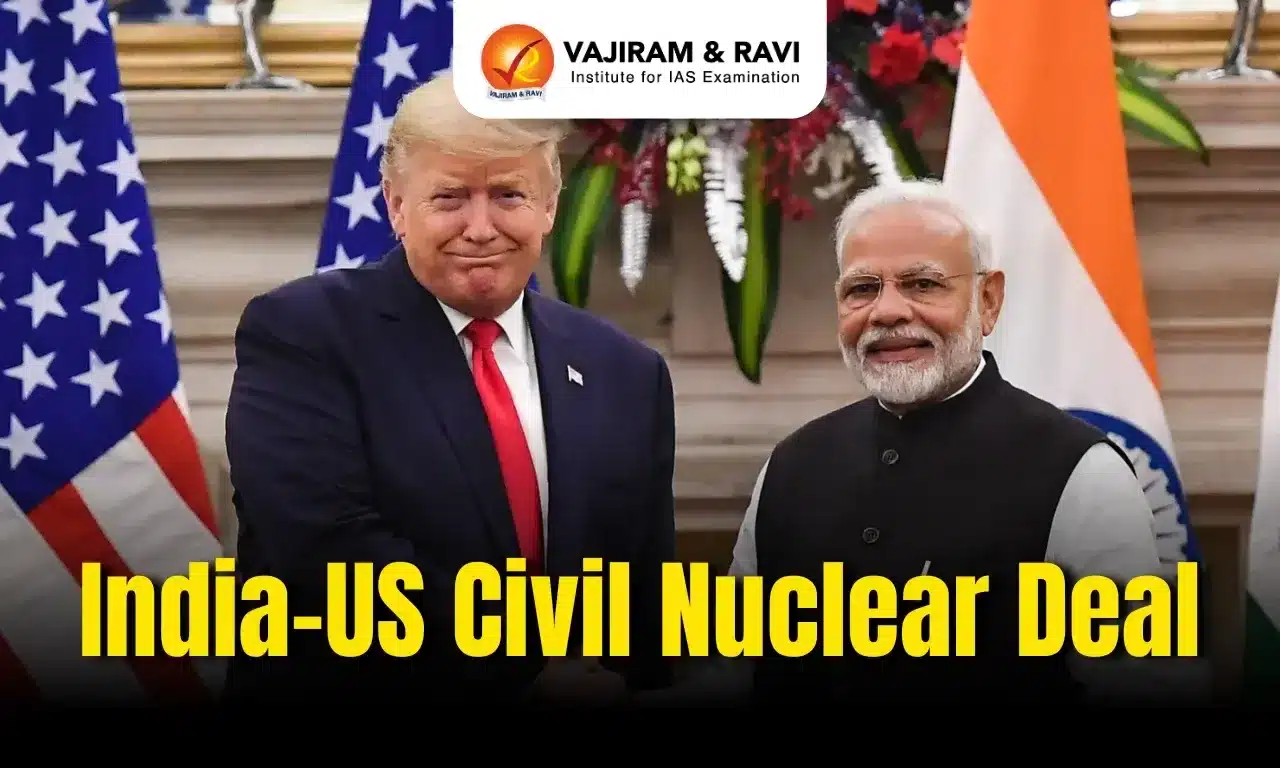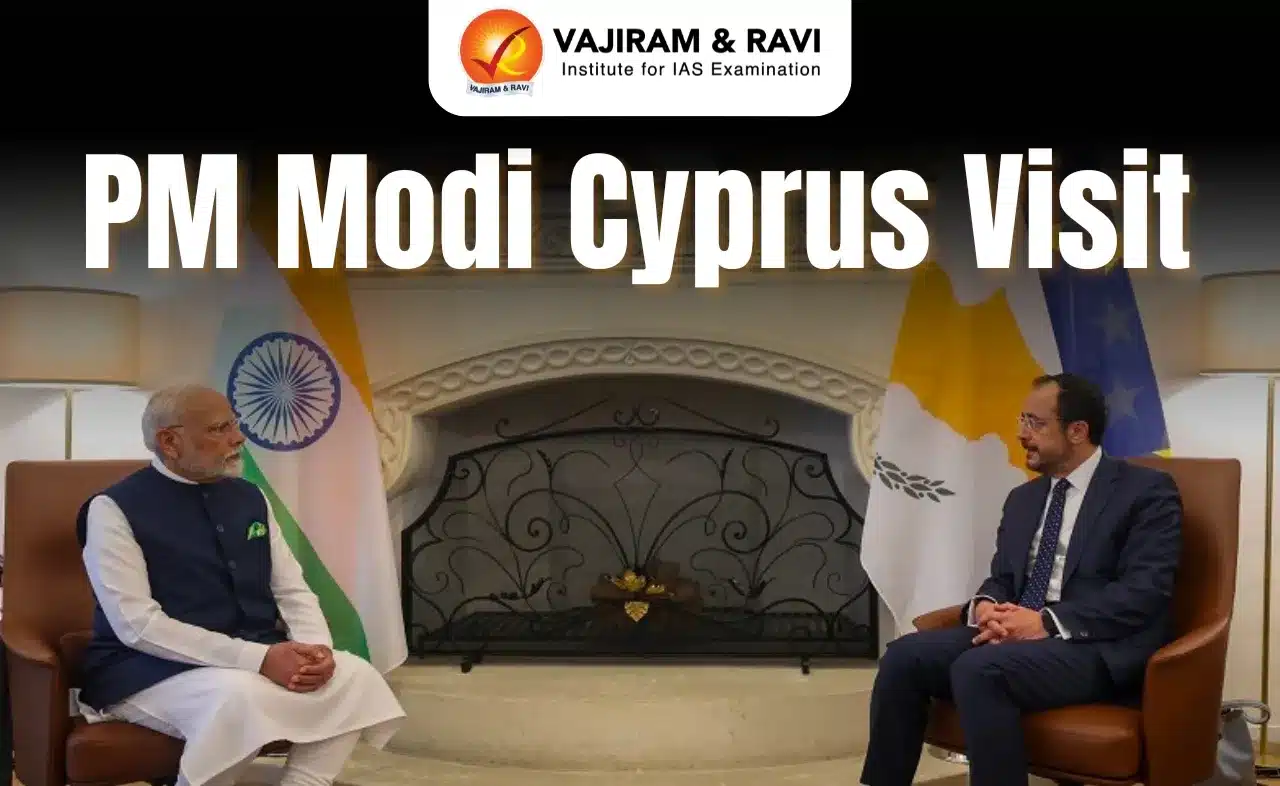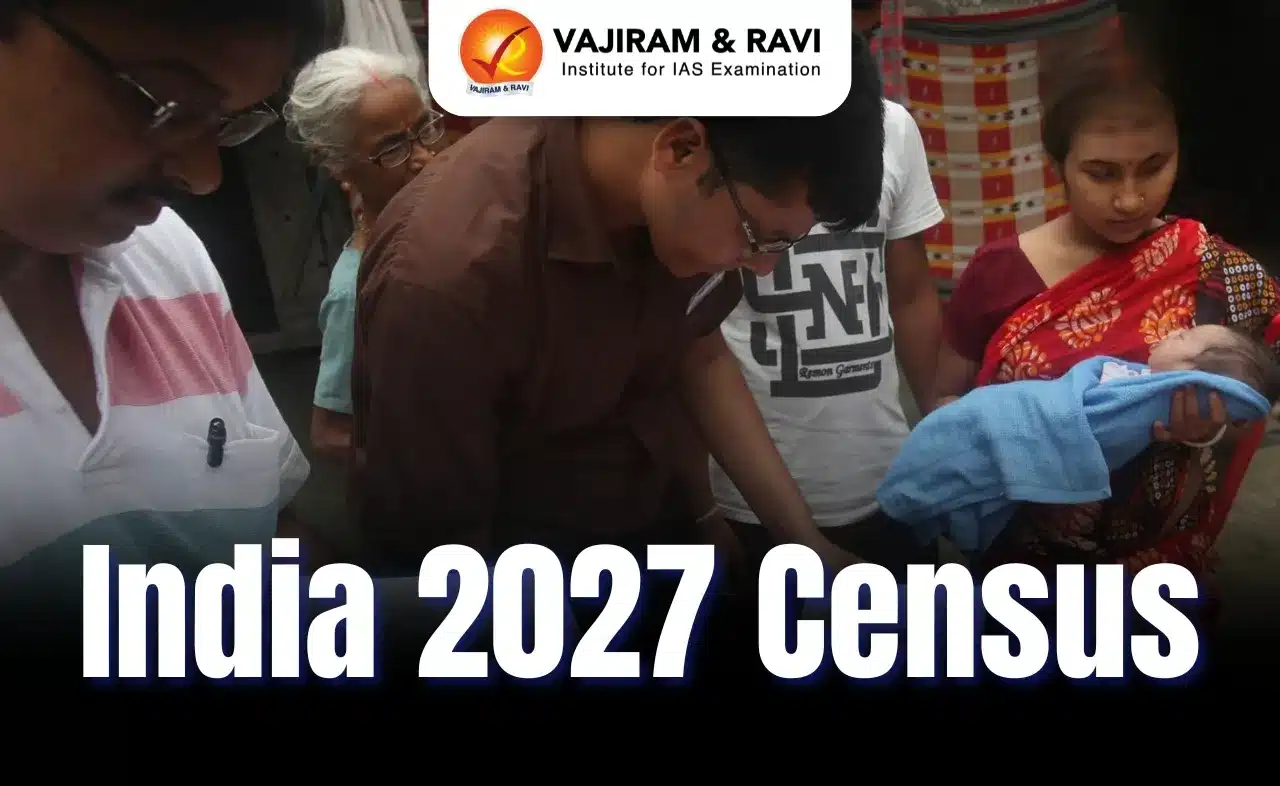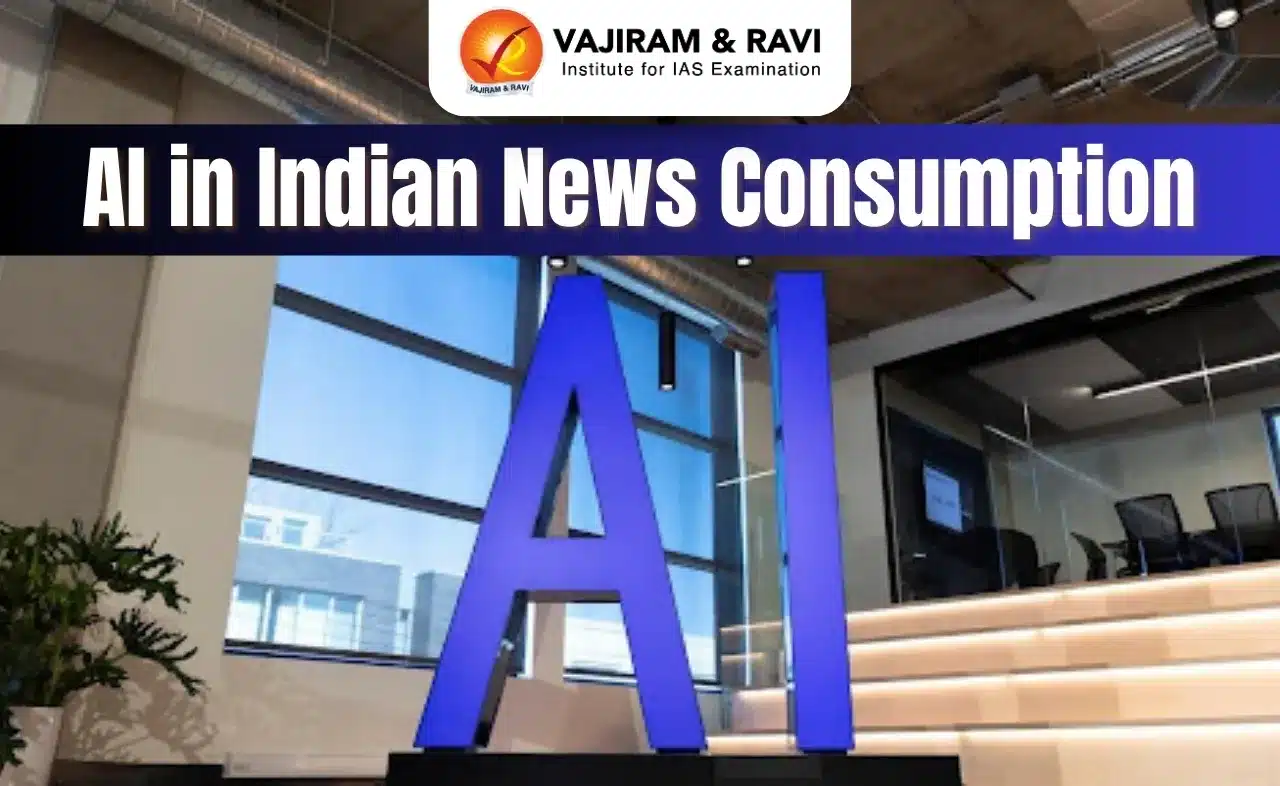What’s in Today’s Article?
- India-US Civil Nuclear Deal Latest News
- Key Developments in the India-US Civil Nuclear Deal
- Conditions and Safeguards of the Recent Deal
- Strategic and Diplomatic Significance
- Geopolitical and Economic Factors
- Future Prospects
- India’s Strategic Vision for SMRs
- Conclusion
- India-US Civil Nuclear Deal FAQs
India-US Civil Nuclear Deal Latest News
- The India-US civil nuclear deal, signed two decades ago, has taken a significant step forward with regulatory approval from the US Department of Energy (DoE).
- The approval allows US-based Holtec International to transfer Small Modular Reactor (SMR) technology to Indian private firms.
Key Developments in the India-US Civil Nuclear Deal
- US DoE authorisation:
- Regulation involved: “10CFR810” (Part 810 of Title 10, US Atomic Energy Act, 1954).
- Authorised recipients:
- Holtec Asia (Holtec’s Indian subsidiary).
- Tata Consulting Engineers Ltd (TCE).
- Larsen & Toubro Ltd (L&T).
- Excluded entities (pending Non-proliferation assurances):
- Nuclear Power Corporation of India Limited (NPCIL).
- National Thermal Power Corporation (NTPC).
- Atomic Energy Regulatory Board (AERB).
Conditions and Safeguards of the Recent Deal
- Duration: 10 years (subject to 5-year reviews).
- Restrictions:
- No retransfer of technology to other Indian entities or foreign countries without US consent.
- Use only for peaceful nuclear activities under International Atomic Energy Agency (IAEA) safeguards.
- No access to enrichment technology or Sensitive Nuclear Technology.
- Prohibition on military or naval propulsion use.
- Reporting requirements: Holtec to file quarterly reports to DoE.
Strategic and Diplomatic Significance
- Revival of the 123 Civil Nuclear Agreement:
- The agreement, signed in 2007, aimed at full civil nuclear cooperation, including enrichment and reprocessing.
- Despite diplomatic progress, operational hurdles delayed implementation.
- India’s nuclear sector implications:
- Technological advancements:
- India’s civil nuclear programme has primarily relied on Pressurised Heavy Water Reactors (PHWRs).
- Holtec’s SMRs use Pressurised Water Reactor (PWR) technology, which dominates global nuclear energy.
- Opportunity to modernize India’s nuclear energy capabilities.
- Private sector involvement:
- Holtec’s collaboration with Indian firms could boost domestic manufacturing of SMR components.
- The potential to position India in the global SMR supply chain.
- Technological advancements:
Geopolitical and Economic Factors
- US-India collaboration vs. China’s SMR expansion:
- China is aggressively expanding in the SMR domain, leveraging it for diplomatic influence in the Global South.
- India-US collaboration could provide a counterbalance to China’s dominance in nuclear technology.
- Impact on US-India trade relations: Despite protectionist policies under previous US administrations, this deal signifies a commitment to technology transfer and economic cooperation.
- Challenges in implementation:
- India’s Civil Liability for Nuclear Damage Act (2010) has deterred foreign investment due to liability concerns.
- Amendments to the Atomic Energy Act (1962) needed to allow private sector participation in nuclear power generation.
Future Prospects
- Next steps for Holtec in India – Possible collaborations:
- TCE for engineering expertise.
- L&T for manufacturing nuclear components.
- Potential entry of NPCIL and NTPC: Government may provide necessary assurances to include state-owned enterprises in future agreements.
- Holtec’s expansion plans: Holtec Asia’s facility in Dahej, Gujarat, could see workforce expansion if manufacturing is approved.
India’s Strategic Vision for SMRs
- Clean energy transition: SMRs are seen as a viable option for reducing carbon emissions and meeting energy demands. Key part of India’s renewable energy strategy.
- Global nuclear competitiveness: India’s engagement in SMR development could enhance its standing in the international nuclear energy market.
Conclusion
- The US regulatory approval for Holtec marks a milestone in operationalizing the India-US civil nuclear deal.
- This development aligns with India’s goals for energy security, technological advancement, and geopolitical positioning.
- However, regulatory and legal challenges need resolution to fully leverage the deal’s potential.
India-US Civil Nuclear Deal FAQs
Q1. Discuss the significance of the recent US Department of Energy’s approval under “10CFR810” for India’s civil nuclear sector.
Ans. The approval allows Holtec International to transfer Small Modular Reactor (SMR) technology to private Indian firms.
Q2. What are Small Modular Reactors (SMRs), and why are they important for India’s energy sector?
Ans. SMRs are nuclear reactors with a capacity of 30MWe to 300MWe, offering advantages such as scalability, cost-effectiveness, and suitability for clean energy transitions.
Q3. Analyze the geopolitical implications of India-US collaboration in nuclear technology.
Ans. The partnership enhances India’s technological and strategic position in the global nuclear energy market, countering China’s growing dominance in SMRs.
Q4. What legal and regulatory hurdles have delayed the full implementation of the India-US civil nuclear agreement?
Ans. Key challenges include India’s Civil Liability for Nuclear Damage Act (2010), which deters foreign investment due to supplier liability concerns.
Q5. How can India leverage the latest US regulatory clearance to strengthen its domestic nuclear manufacturing capabilities?
Ans. India can enhance its nuclear supply chain and position itself as a key player in the global SMR market.
Source: IE
Last updated on June, 2025
→ UPSC Notification 2025 was released on 22nd January 2025.
→ UPSC Prelims Result 2025 is out now for the CSE held on 25 May 2025.
→ UPSC Prelims Question Paper 2025 and Unofficial Prelims Answer Key 2025 are available now.
→ UPSC Calendar 2026 is released on 15th May, 2025.
→ The UPSC Vacancy 2025 were released 1129, out of which 979 were for UPSC CSE and remaining 150 are for UPSC IFoS.
→ UPSC Mains 2025 will be conducted on 22nd August 2025.
→ UPSC Prelims 2026 will be conducted on 24th May, 2026 & UPSC Mains 2026 will be conducted on 21st August 2026.
→ The UPSC Selection Process is of 3 stages-Prelims, Mains and Interview.
→ UPSC Result 2024 is released with latest UPSC Marksheet 2024. Check Now!
→ UPSC Toppers List 2024 is released now. Shakti Dubey is UPSC AIR 1 2024 Topper.
→ Also check Best IAS Coaching in Delhi
























